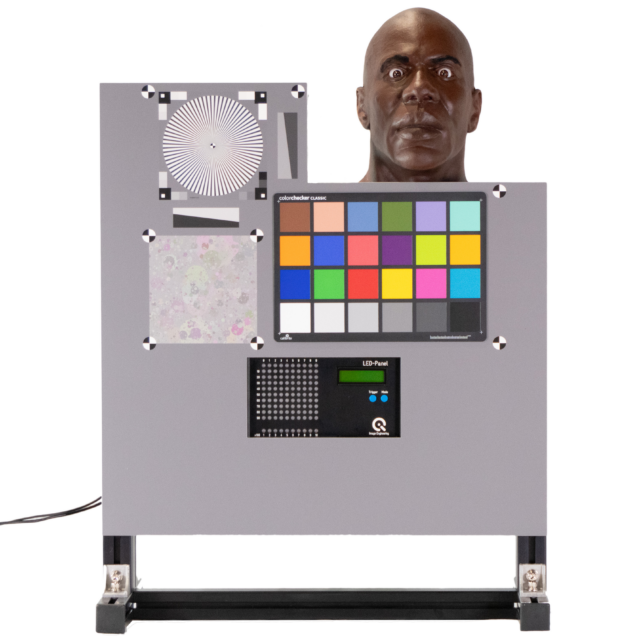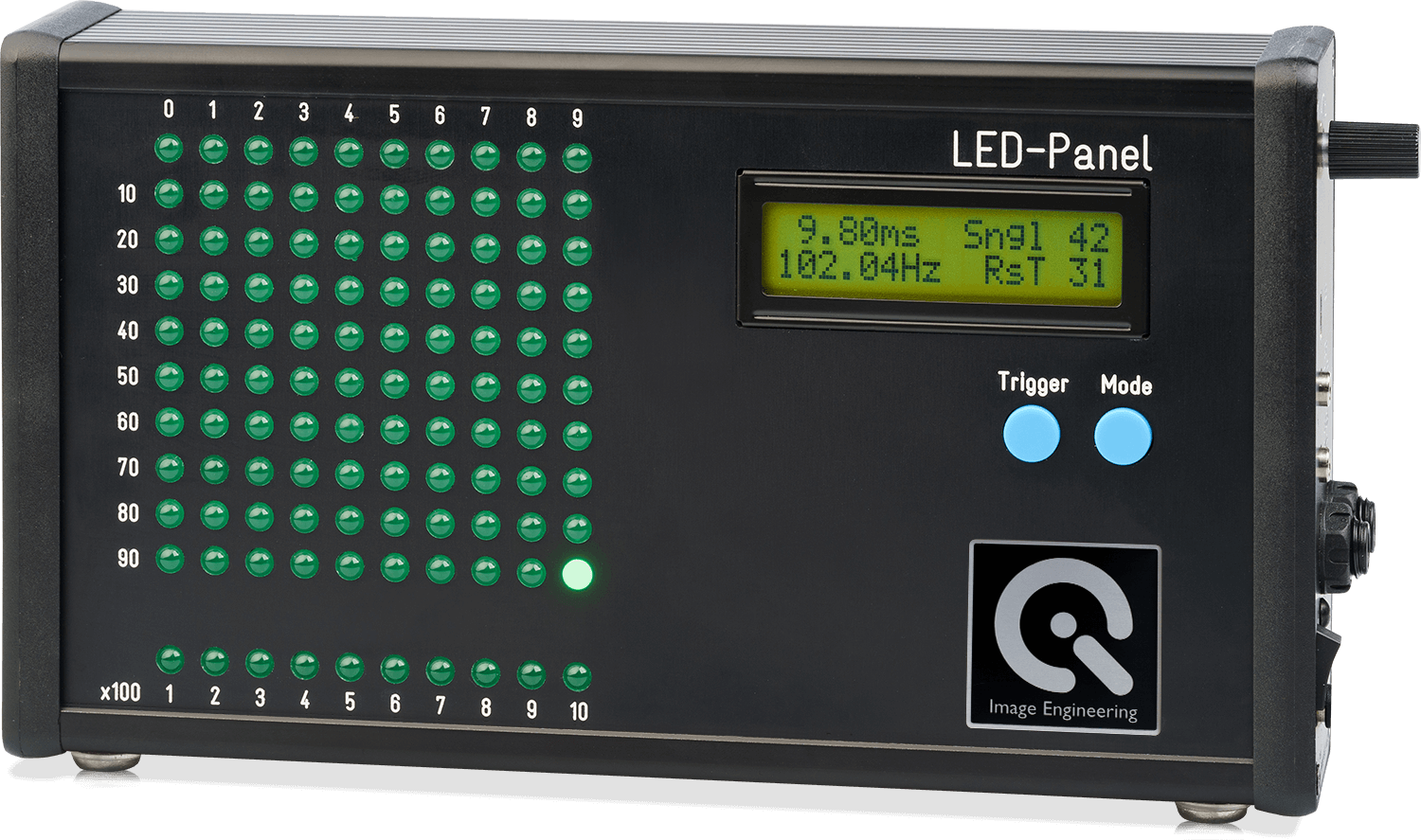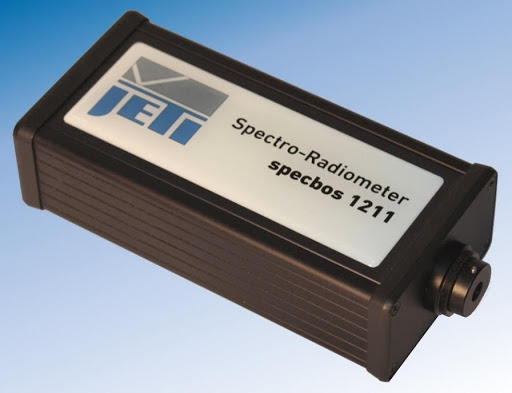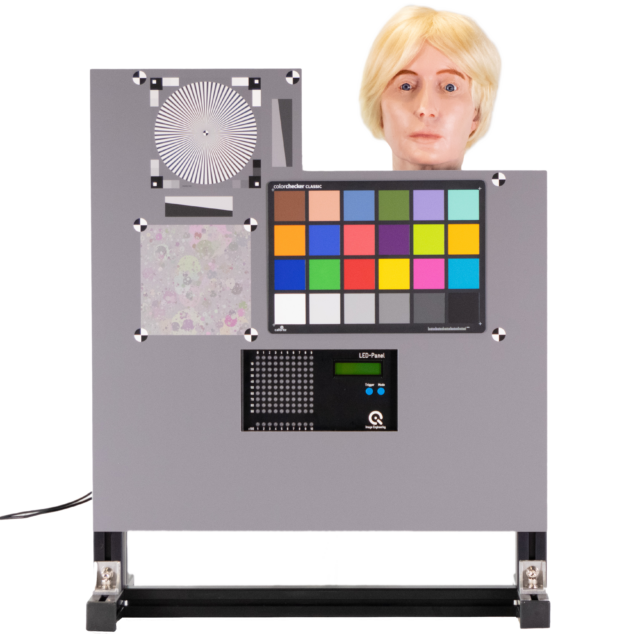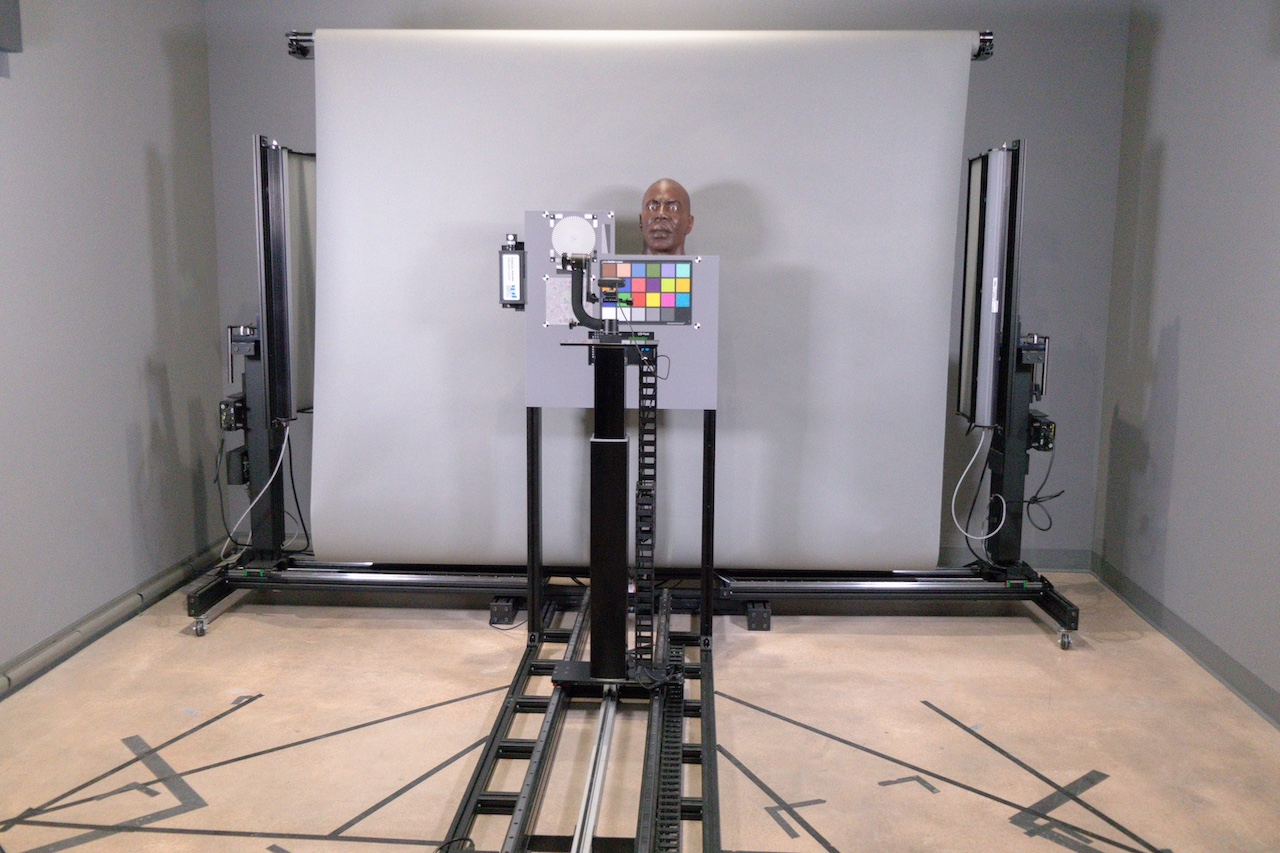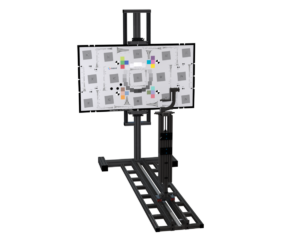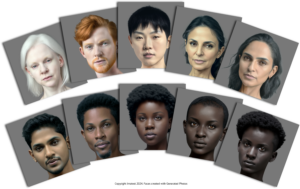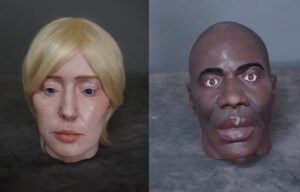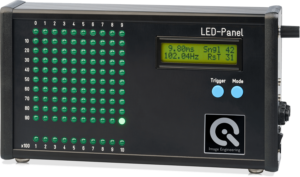The Imatest WebCam Studio is a comprehensive target designed to measure a variety of Image Quality Factors. The chart contains the Calibrite Classic ColorChecker, Siemens star, spilled coins/dead leaves texture, and slanted edge targets.
The Imatest webcam studio optionally includes motorized head turner and two different mannequin heads—one with a dark skin tone (Richard) and a second with a light skin tone (Alexis), which are used to compare the behavior of auto white balance (AWB) and auto exposure (AE) algorithms under various conditions. The rotary head turner can turn the head to look away from the camera for testing of adaptive auto-exposure in video webcams.
Optionally includes Camera Timing System LED-Panel for timing testing and/or a Specbos spectraradiometer for measuring the lighting spectrum.
Article: How Consumer Cameras Perform Across Skin Tones
Paper: Evaluating Camera Performance in Face-Present Scenes with Diverse Skin Tones
Email sales@imatest.com for pricing.
Description
Video Demonstration
This target is capable of measuring the following properties:
- Visual Noise – a way of measuring image noise similarly to the way the human eye does.
- Contrast, Dynamic Range and Exposure – These three areas are often linked. How bright your image is, the range of what is “bright” and “dark” and how well details in dark areas are reproduced are all key areas that separate better from lesser designs.
- Spatial Frequency Response – a way of measuring not just how “sharp” an image is, but how well image detail is preserved and carefully enhanced without adding unpleasant artifacts.
- Color Reproduction – How well a camera reproduces colors, not just in a test chart but in different faces across many different test scenarios.
- Image Uniformity – Sometimes called “shading”, a measure of how consistent brightness and color accuracy are across the entire image.
- Framerate – How fast your camera responds to the real scene often depends solely on how often frames are captured. Thresholds for framerate in low and mid-light conditions focus on the places problems happen the most.
Videos and still can be analyzed using Imatest software and supporting scripts to obtain objective metrics quantifying auto exposure, white balance, and color accuracy performance.


